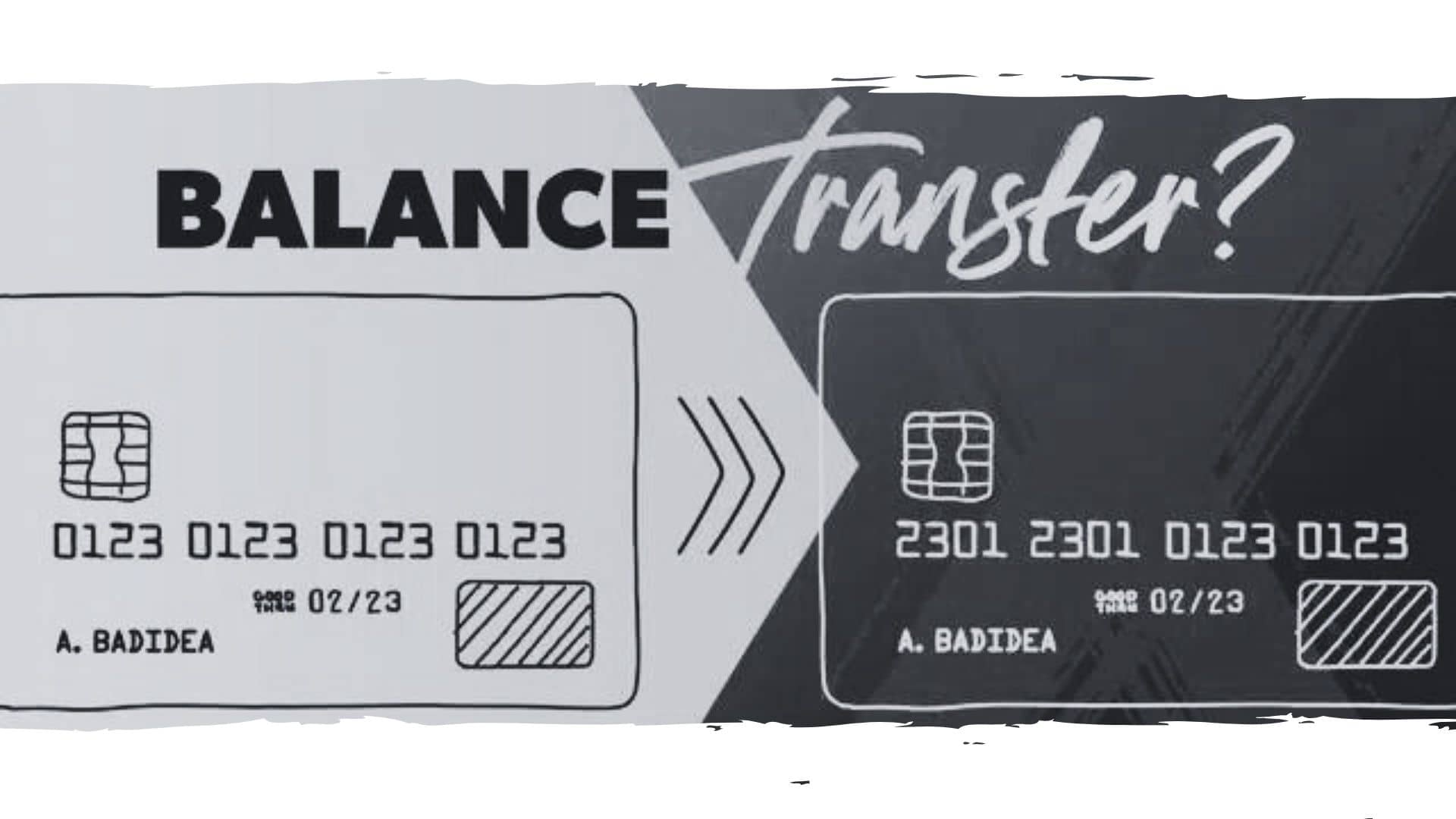In today’s world, it can be a challenge to understand credit card debts. Luckily there are balance transfer credit cards that allow you to combine your debt and reduce the amount paid towards interest.
This guide provides detailed information on balance transfer credit cards including how they work, what they offer, when should someone consider using them and other tips for managing debt effectively?
So whether you live in The USA or The UK this article is for you!
What Are Balance Transfer Credit Cards?
When people have balances on more than one credit card balance transfer credit cards let them move all their balances onto another new card which may have better terms.
This way of consolidating helps simplify matters and could save money on interest payments.
How Does Balance Transfer Credit Cards Work?
The provider pays off any outstanding amounts owed under existing agreements having done so they consolidate what is owed into just one account based around use of these types of cards after transferring them there themselves. From now onwards customers will make monthly repayments but ideally during an introductory period where annual percentage rates (APR) are much lower or even zero per cent if lucky.
Benefits of Using Balance Transfer Credit Cards
Balance transfer credit cards can provide many advantages when trying to take control over personal finance again.
Lower Interest Rates
During promotional periods some balance transfers charge no or very low annual percentage rates which means huge savings in interests over timeframes such as these.
Consolidation of Debt
When all debts get combined onto a single card it simplifies things greatly for most people since they only need worry about making one payment each month instead multiple payments throughout different days every week/month/year thus reducing administration workload considerably!
Savings on Interest Payments
By moving expensive-to-service loans elsewhere individuals usually save large sums due to reduced rates charged by such lenders thereby speeding up settlement process significantly!.
Factors to Consider When Choosing a Balance Transfer Credit Card
There are several things that should be taken into account before selecting the right balance transfer credit card.
Introductory APR Period
The period for which introductory annual percentage rate (APR) is applicable should be critically scrutinized. It is important to evaluate longer durations of low or zero interest rates as they maximize potential savings on interests.
Balance Transfer Fees
Fees charged for transfers must also come into play when deciding among different cards because these can greatly affect overall costs involved in such financial transactions.
Regular APR
This refers to standard yearly percentage chargeable after lapse of time within which lower initial rates were being enjoyed; therefore one ought to pick a provider whose regular APR is competitive enough considering post-promotion high charges associated with many providers nowadays.
Credit Score Requirements
Minimum credit rating needed by applicants before qualification may vary from one institution to another hence it’s advisable that individuals check this out first so as not waste time going through unnecessary procedures only later realizing they do not qualify due poor scores thus missing better deals offered elsewhere based on higher ratings.
Additional Benefits and Features
Potential cardholders should also look at other value-added services like rewards programs, cashback incentives, or travel insurance covers among others attached to specific cards targeted at enhancing customer satisfaction levels beyond mere balance transfers alone.
How to Apply for a Balance Transfer Credit Card?
For successful applications of balance transfer credit cards, there are certain steps that need extra care during application process;
Gather Necessary Information
Beforehand ensure all personal details including social security number (SSN), income level information together with current credit card account numbers etcetera have been availed ready for use since failure provide required inputs might lead disqualification from accessing desired product/service or even delay processing timeframes unnecessarily thereby causing inconvenience where urgent needs exist;
Research And Compare Cards
After submission, the issuer reviews the information provided and credit history to decide if one is eligible. Normally, approvals are made within a few working days.
Understanding Balance Transfer Fees and APRs
Balance transfer fees and APRs form part of the considerations when determining whether it is cost-effective to shift balances.
Balance Transfer Fees
These charges (usually in percentage) affect the whole amount spent on moving money between accounts. To know if it is worth doing so, compare fee sizes with potential savings on interest rates.
APR (Annual Percentage Rate)
This is an annualized borrowing cost expressed as a percentage of the credit card limit; it includes all interests charged over time. Look at both introductory or regular APRs for long-term affordability estimation.
Tips for Successful Balance Transfers
Here are some tips on how you can make the most out of balance transfer credit cards for effective debt management:
Pay Attention to Timing
Take advantage of low or 0% APR during promotional periods by initiating transfers within these timeframes. Be watchful of expiry dates to avoid sudden accruals of interest.
Avoid New Purchases
Focus on paying off existing balances rather than making fresh transactions with this card. Otherwise, new buys might attract normal rates which will counterbalance benefits from transferring balances.
Make Timely Payments
Keep up with regular payment schedule such that all dues are paid promptly thus avoiding late fees and penalties. Employ automatic payment systems or set reminders about deadlines for settlement.
Monitor Your Credit Score
Regularly check your credit score changes so that you can see how different financial behaviors affect them positively/negatively. Responsible use of this type of credit facility may lead to higher rating over time.
Maximizing the Benefits of Balance Transfer Credit Cards
The following strategies can help you unlock more rewards from using BTCCs:
Pay Off Debt Strategically
Start by repaying debts attracting highest interests since that would result in greater savings on such costs. While servicing those accounts, allocate minimum payments to others with lower rates.
Avoid Closing Old Accounts
Even after transferring ownership rights over them, try not to close down previous credit card accounts because it may shorten the length of your credit history which might impact negatively on future borrowing capacity.
Utilize Rewards and Incentives
Use rewards programs wisely by redeeming points for cash back or air miles whenever possible but without going overboard on such indulgences.
Managing Debt with Balance Transfer Credit Cards
Although this type of plastic money can be instrumental in effective debt management, one needs to use them cautiously.
Create a Repayment Plan
Come up with a realistic plan that will help you clear what has been shifted during promotional periods. Determine monthly installments you can afford based on income levels and other financial obligations then stick to it until completion.
Track Your Progress
Keep checking how far along are you in relation to meeting payment deadlines stipulated within promotion period agreements. In case things do not go as planned, adjust repayment strategies accordingly so as not lose focus entirely.
Seek Professional Advice if Needed
If personal finances become too complicated while dealing with these instruments seek professional assistance from financial advisors or credit counselors. They have skills needed for overcoming challenges posed by complex monetary situations hence providing appropriate advice tailored towards specific needs.
Alternatives to Balance Transfer Credit Cards
Even though BTCCs are good options for managing debts there still exist other alternatives suitable under different scenarios.
Debt Consolidation Loans
Consider consolidating all outstanding loans through taking another one commonly referred to as debt consolidation loan/personal loan. Normally they come at fixed interest rates and allow structured repayments thus making planning easier due predictability involved in terms of amounts payable over time.
Debt Management Plans
Ponder enrolling into DMPs organized by nonprofit organizations offering credit counseling services. These programs involve bargaining with lenders so that rates charged may be reduced further while establishing frameworks where borrowers can make payments comfortably.
Directly engage the creditors themselves and work towards reducing the interest rates or negotiating repayment plans. This means that most if not all creditors are willing to work with individuals who are in financial distress to come up with solutions which will benefit both parties.
FAQs
What are balance transfer credit cards, and how do they differ from regular credit cards?
A balance transfer credit card allows one to move their existing balances onto a new card with better terms such as lower interest rates thus enabling debt consolidation and saving on interests.
How do balance transfer credit cards work, and what is the purpose of transferring balances?
They enable one to manage their debts by putting them together into one card which may have a lower or 0% APR during promotional periods so as to expedite repayment.
What are the benefits of using balance transfer credit cards?
Some advantages include reduced rates on interests, bringing all debts into one place for easy tracking and lowering overall cost paid towards interests for long term hence increasing person’s ability deal with money problems.
What factors should I consider when choosing a balance transfer credit card?
When choosing this type of card think about; how long does promotion last?, What fees will be charged? What is regular APR? Minimum score required? any other extras needed?
How do I apply for a balance transfer credit card, and what information do I need to provide?
To sign up visit issuer site & fill out personal/financial info. Have SSNs, income details & current CC numbers ready.
What are balance transfer fees, and how do they affect the overall cost of transferring balances?
Balance Transfer Fees (BT fee) usually % based on transferred amount; affects whether moving funds makes sense considering potential savings on interest vs fees assessed.
What is APR, and how does it impact the cost of using a balance transfer credit card?
APR=annualized borrowing costs incl. int. Review both intro & reg APR’s – ensure can afford post-promo period rate.
What are some tips for completing a balance transfer?
Timing is everything; don’t make new purchases; pay on time; monitor credit closely.
How can I maximize the benefits of a balance transfer credit card and avoid common pitfalls?
Pay more than min amount due each month, keep old acct open/active, take advan of perks wisely, seek free prof help if needed.
Are there any alternatives to using balance transfer credit cards for managing debt?
Debt consolidation loans, DMPs & DIY negotiation serve diff needs based on individual circumstances.
Conclusion
Balance transfer credit cards can be very helpful in managing one’s debts effectively.
Through understanding how these work, looking at relevant factors and implementing strategic plans for managing debt it is possible to use this tool as a way of jump starting your financial life again.
Whether someone wants their debts consolidated or they just need lower interests so as save money on repayments also even if you want to manage your finances better then consider using such type of card now that you have knowledge about them which might come handy in the future .




